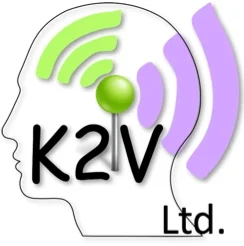Note
There are repeated terms or phrases used in this website that may need explanation for clarity. These explanations refer specifically to how these terms are used in this website alone and are arranged in alphabetical order.
Analogue taxonomies
One of the techniques used by geoscientists to approximate value in unproven petroleum systems is to identify working petroleum systems that contain analogue content with similar potential building blocks to help identify critical success factors; in effect, to help establish what to look for. K2V has developed a series of pre-defined narratives with analogue content to help identify reservoir types and trap styles. Each narrative element follows a sequential flow structured around comprehensive taxonomies so that each branch of the narrative is discretely qualified as a coat-hanger for value. If you would like to know more about the taxonomies used, please contact info@k2vltd.com.
Cognitive bias
Cognitive bias refers to errors in thinking whereby interpretations and judgments are mapped on to, and become non-uniquely conflated with, pre-existing learning in individuals such that they appear to be drawn in an illogical fashion. Cognitive biases are probably anything but illogical as they follow organised sets of hurdles that are identifiable and predictable; the individual, however, may not be entirely conscious of all the influences that guide cognitive bias. There are many types of cognitive bias that have been described by a number of workers in the field that include confirmation bias, anchoring bias, availability bias, technology determinism, post hoc-fallacy, fallacy of centrality, cultural bias etc.. Confirmation bias is probably the bias that resonates with most people as one that is most difficult to overcome because to do so requires that we suspend our disbelief; a practice many are only prepared to accept in a fictional world.
Collapsing cognitive bias
Cognitive bias can lead to perceptual blindness; both lead to poor decision making, whether that involves the work that needs to be done, what issues to focus on or whether an opportunity has any real value in the success case. There are two ways to over come the effects of cognitive bias. The first is to increase individuals' awareness of the erosive effects of cognitive bias and teach them how to mitigate against its effects. The second (adopted by K2V Limited) is to recognise that cognitive bias is present and to collapse its effects either through collaboration (knowledge sharing) or by mathematically converging on collective knowledge (knowledge stacking). These approaches and their hybrids are collectively referred to by K2V Limited as collapsing cognitive bias.
Geo-commercial
Refers to the geo-spatial distribution of a combination of metrics that have a direct influence on Net Present Value of an opportunity, its "doability" and above-ground (i.e. non-technical) risks.
Geo-technical
Refers to the geo-spatial distribution of metrics that contribute to the robustness of a petroleum system.
Knowledge
Knowledge is defined here as "the unique accumulation of facts, information or skills gained through experience and learning" (click here for context).
Knowledge harvesting
Knowledge harvesting refers specifically to the approach adopted by K2V Limited for internal crowd-source spatial knowledge (click here for an explanation how the approach works).
Knowledge sharing
Knowledge sharing can take place in an organisation where knowledge holders are encouraged to freely share their knowledge to collapse cognitive bias through collaboration - in effect by having conversations. Full knowledge sharing favours having a single record for each opportunity segment. In effect, the screening value of that segment has been agreed by a number of (named) accredited knowledge holders who can be consulted in perpetuity (wherever located within the organisation) to keep the knowledge live.
Knowledge stacking
Knowledge stacking is introduced here as an alternative to knowledge sharing. Many organisations have legal constraints that prevent data from being shared between entities which may also include limits on knowledge sharing. The extreme is that knowledge holders are legally constrained from having conversations and that the forum where knowledge can be shared is at the board level (where the knowledge holders have no representation). Under those circumstances, each value segment may have multiple records that represent different perceptions of the same segment (not collaboratively resolved). These can be resolved mathematically using a methodology that combines over-lapping hypotheses developed by K2V, and is referred to on this website as stacking.
Kracqing
References to kracqing review segments or kracqing evaluations describes the act of applying the KRACQS™ metadatabase to distil a relative ranking by delivering Knowledge Ranking Assessments through Calibrated Quantitative Screening. Reference is also made colloquially to “basin kracqing” but in reality, the scale of review segment is determined by the business focus. The metadatase applies equally to kracqing petroleum systems, play, venture, opportunity or study segments (not common risk segments) but it is recommended to roll these up to a basin level for global calibration.
Perceptual blindness
Perceptual blindness describes the condition where the individual fails to see an unexpected event in plain sight, which includes some types of cognitive bias such confirmation bias, where perception is restricted by the need for self-fulfilment that the individual can no longer recognise the truth.
Peer opportunity
A peer opportunity at a venture, play or basin level is a segment that has demonstrably comparable attributes with an aspired opportunity which is proven in that segment but not proven in the aspired opportunity. It is called a "peer" opportunity rather than an "analogue" opportunity because there are large degrees of uncertainty, so the analogue content is speculative. Each speculation can in effect test sensitivities on the overall value matrix.
Value polarisation
Value polarisation addresses how to take what is known about an opportunity (geo-commercial and geo-technical) and establish whether its ranking can be improved, either by acquiring more data or by applying focused technology to existing data, or by negotiating better terms. The process is explained more fully elsewhere (click here).

